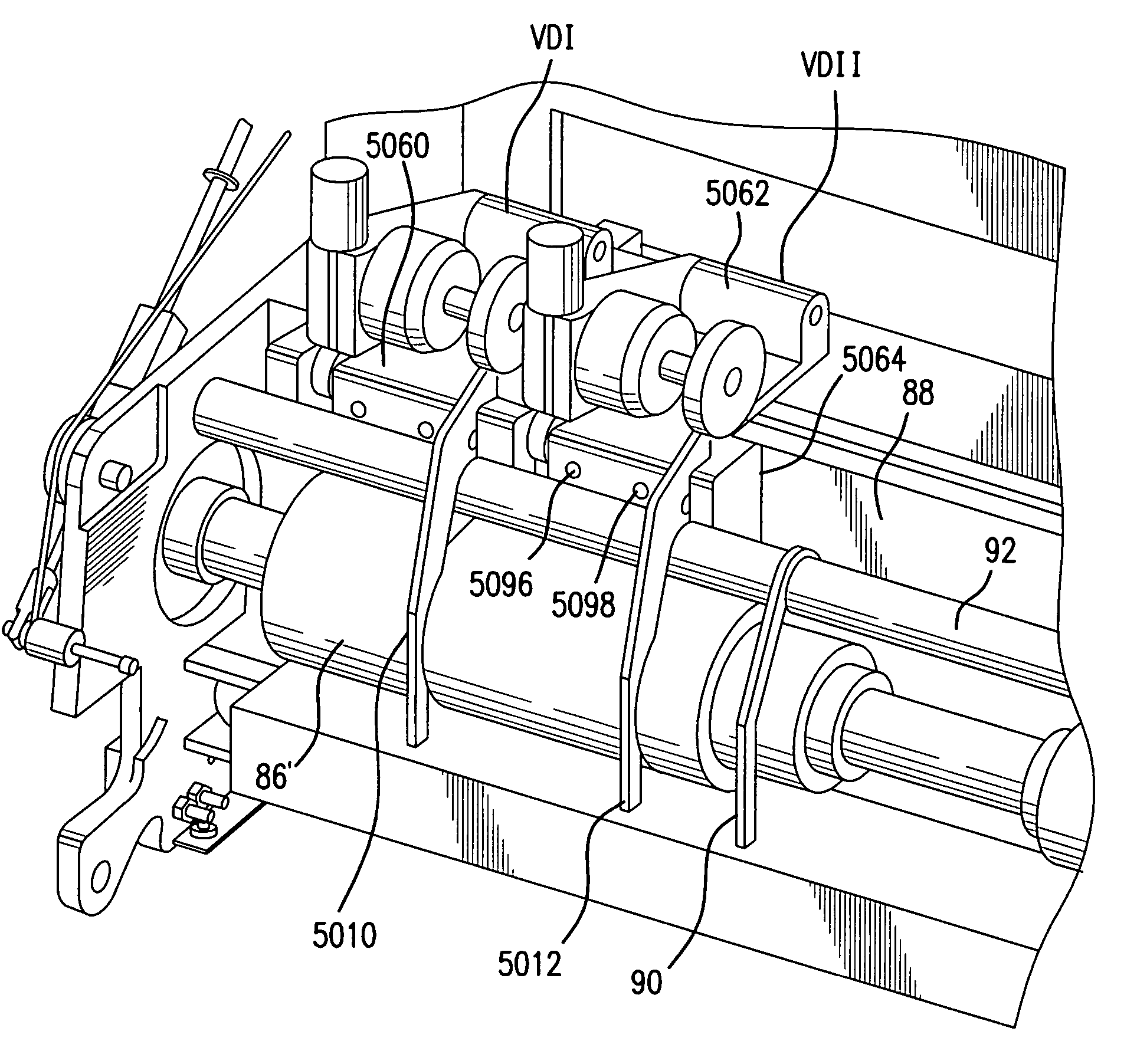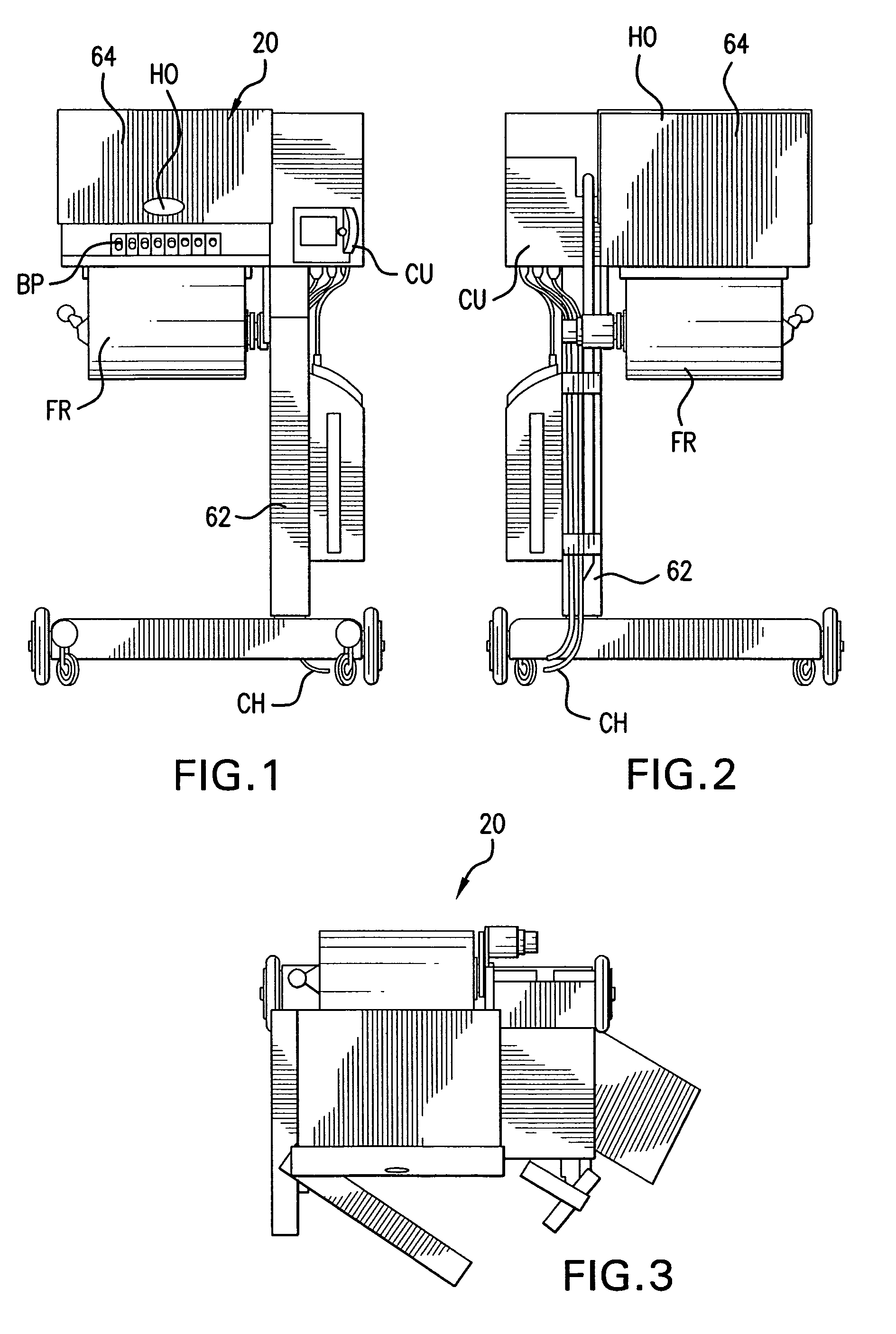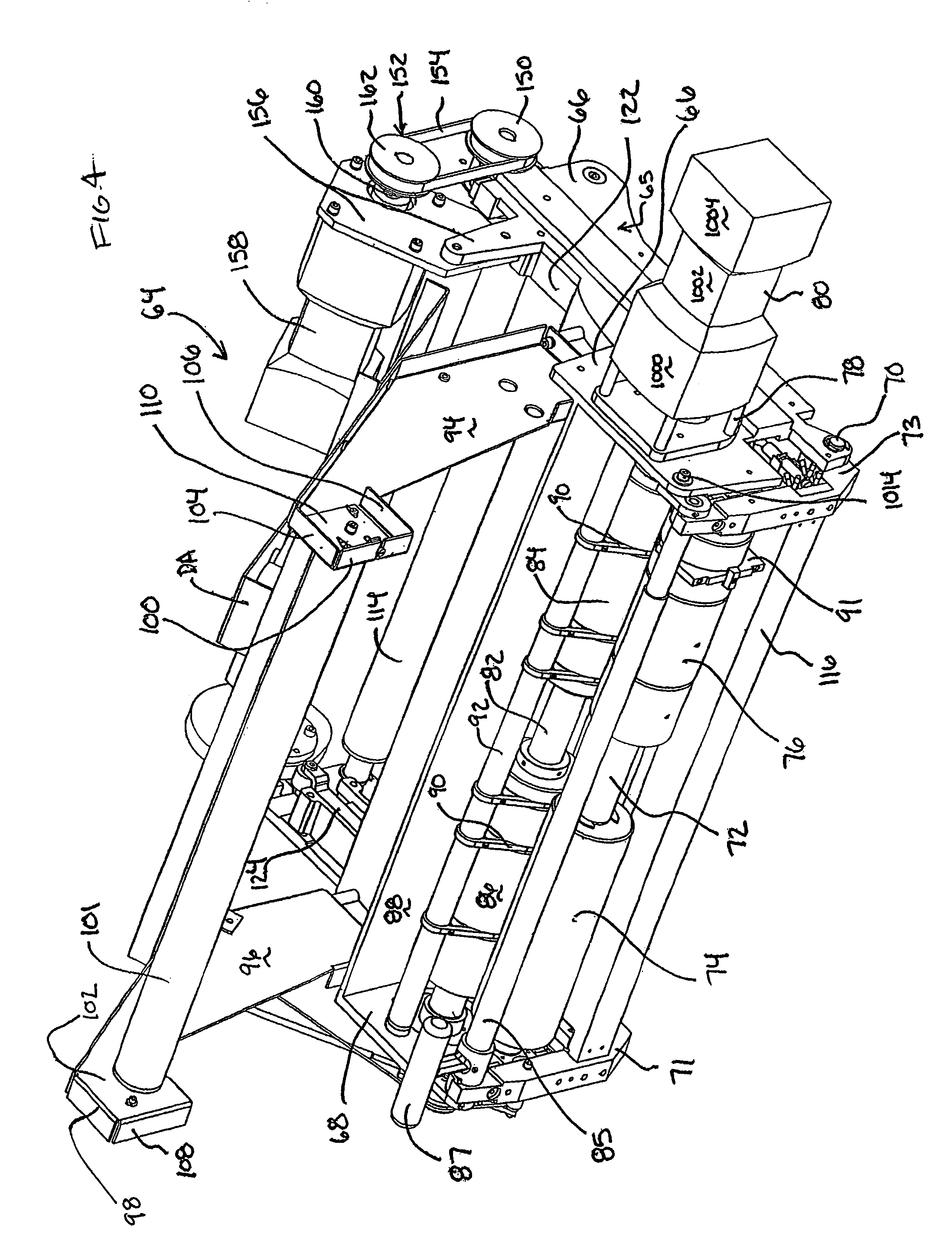Venting system for use with a foam-in bag dispensing system
a technology of foam-in-bag and venting system, which is applied in the direction of liquid material, packaging goods, transportation and packaging, etc., can solve the problems of poor foam flow within the bag, insufficient vent formation, and shrinkage of foam, so as to reduce the possibility of foam shrinkage, minimize the restriction of foam flow and distribution, and facilitate the effect of implementation
- Summary
- Abstract
- Description
- Claims
- Application Information
AI Technical Summary
Benefits of technology
Problems solved by technology
Method used
Image
Examples
Embodiment Construction
[0045]The venting system of the present invention can be utilized in a variety of bag formation with vent requirement systems such as the foam-in-bag venting system of the above noted PCT Patent Application PCT / US2004 / 014423 (e.g., as part of a retrofit process or in conjunction with an initial manufacture of a foam-in-bag system). FIGS. 1 to 3 illustrate the foam-in-bag dispensing system 20 described in PCT / US2004 / 014423 which represents one of many possible foam-in-bag systems suitable for use with the venting system of the present invention to provide an improved foam-in-bag system. As shown in FIGS. 1-3 the foam-in-bag dispensing system 20 is in communication with a chemical supply (not shown) which typically involves a first chemical supply line from a container source (supplying chemical component A) and a second chemical supply line from a container source (supplying chemical component B) via respective heated chemical hoses CH which feed into a manifold port 198 of the dispe...
PUM
| Property | Measurement | Unit |
|---|---|---|
| angle | aaaaa | aaaaa |
| width | aaaaa | aaaaa |
| width | aaaaa | aaaaa |
Abstract
Description
Claims
Application Information
 Login to view more
Login to view more - R&D Engineer
- R&D Manager
- IP Professional
- Industry Leading Data Capabilities
- Powerful AI technology
- Patent DNA Extraction
Browse by: Latest US Patents, China's latest patents, Technical Efficacy Thesaurus, Application Domain, Technology Topic.
© 2024 PatSnap. All rights reserved.Legal|Privacy policy|Modern Slavery Act Transparency Statement|Sitemap



